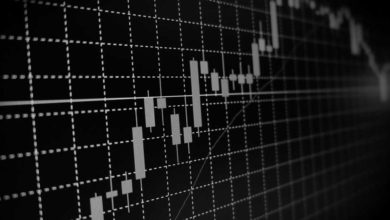Taking the mystery out of cryptocurrency chart reading – Trading to the next level
Given the complexities and elaborateness involved, cryptocurrency charts may seem impossible to decipher. Even though learning to master them can be a time-consuming and bold endeavor, grasping the basics shouldn’t be impossible, even for those without or with limited charting experience. From the moment the waters start to clear, and charts begin to make sense, you may be quickly enchanted to discover that deepening the knowledge gained is easier and can further help you brush up on your trading techniques for more successful outcomes.
Indeed, if you are day trading or using other short-term trading strategies, then the starting point for determining whether your asset should be sold or held starts with checking its price on cryptocurrency exchanges. Say you’ve opted to add Ethereum, the second-largest cryptocurrency, to your investment portfolio. In that case, any other move you’re taking begins with analyzing the current value of Ethereum, as that’s the first step in checking its performance. Afterward, consider whether a larger investment in the token or switching the existing ETH funds for another cryptocurrency makes more sense, and analyze your risk tolerance.
No one says studying charts like a pro is an easily-gained ability you acquire overnight. However, several shortcuts and key concepts can help remove the perplexities from the equation and help you see improvements in your trading game.
What are crypto price charts disclosing?
Some individuals make cryptocurrency investments after seeing some craze build up around a token. This may stem from their fear of missing out on a possibly-booming asset, their conviction that the purchase will make them rich, or their desire to appear knowledgeable when related topics are brought up at a table. On the other hand, those using common sense when introducing a cryptocurrency to their holdings know that a successful investment is associated with a certain level of understanding of the basic parameters involved in a cryptocurrency’s performance assessment. Thus, entering the cryptocurrency realm on the right foot is more likely after making sense of a few indicators:
The price
Breaking into cryptocurrency starts with checking the desired asset’s value. Knowing the technical indicators provides a glimpse into this parameter, so you can figure out what’s trending. The ability to compare price fluctuations with past time frames ranging from days to years can be among the most efficient tools before investing.
The trading volume
By definition, this indicator points to the total amount of a certain cryptocurrency traded over a specific time frame. It provides a glimpse into its trading activity on the chosen exchange or the whole market. Usually, cryptocurrency platforms track this indicator for the past 24 hours.
The market capitalization
Market capitalization is among the most significant indicators of the growth potential of a cryptocurrency, being used to compare the asset’s size against other cryptocurrencies to figure out how safe it is to buy. In other words, it shows the total value of all the existing coins.
The hash rate
This measure represents the rate at which a cryptocurrency is mined. It tracks the number of calculations completed in hash/second units per second. The higher the hash rate, the larger the number of miners that verify transactions, meaning the asset is more secure.
The circulation supply
Probably among the most helpful indicators, the circulation supply shows the trading activity of a token or coin and how much investors use it. As a general rule of thumb, the price grows with decreasing supply and increasing demand.
Why should you use crypto charts?
On the most elemental level, cryptocurrency charts, also known as cryptocurrency graphs, are the most effective tools for projecting or foreseeing the market’s fluctuations, which assists investors in determining when it’s the best time to buy or sell an asset. More specifically, taking the charts out of the equation transforms your investment into a guessing game.
Although deciphering patterns may seem complicated, it is an ability you’ll thank yourself for later. There are three types of charts – candlesticks, lines, and bars, so let’s figure them out so your cryptocurrency journey won’t feel like a blind flight.
Candlesticks – one of the most insightful representations
Cryptocurrency candlesticks provide detailed information due to the very nature of the indicators. For instance, the difference between them and the bar or line graph is that these show whether the price fluctuations were negative or positive over a specific period and to what extent. Each candlestick considers particular information associated with the token’s price in a given period, combining four components: close price, low price, high price, and open price. Additionally, there are several terms to understand when breaking into candlesticks: range, wick, and body.
The fact that the length and width of candlesticks differ may cause some confusion, but this element brings significant implications that can help provide meaningful insight into the cryptocurrency’s performance.
Line charts – the most popular chart among investors
Given the simplicity and straightforwardness of line charts, they rank among the most widely used indicators, especially for those newly tuned into cryptocurrency. Generally, they only rely on the closing price of an asset, making it hard to catch trends or patterns completely.
An abundance of information can be overwhelming, so those unfamiliar with technical analysis resort to line charts to identify the important support and resistance levels.
Bar charts – a little more insightful than line charts
Similar to line charts, bar charts also show the closing price of an asset, only that they provide more details than the previous indicator, including the open, high, and low prices of an investment. They’re an amalgamation of price bars, each depicting price fluctuations over a specific period.
Last words
Cryptocurrencies have an aura of mystery around them, given that their short- or long-term movements are impossible to estimate, nor can anything predict their trajectory. However, those well-versed in the sector have an ace up their sleeve: an aptitude for understanding cryptocurrency charts. Knowing how to read such indicators can help investors make sound investment decisions based on a solid sense of the market’s future condition.
This is a sponsored press release. The publication on this page should not be viewed as an endorsement by CoinGuides.org. CoinGuides is not responsible, directly or indirectly, for any loss or damage caused and we are not responsible for the accuracy or quality of the content on this page. We highly recommend all readers to conduct their own research before investing in the company, products or services mentioned in the above article.




